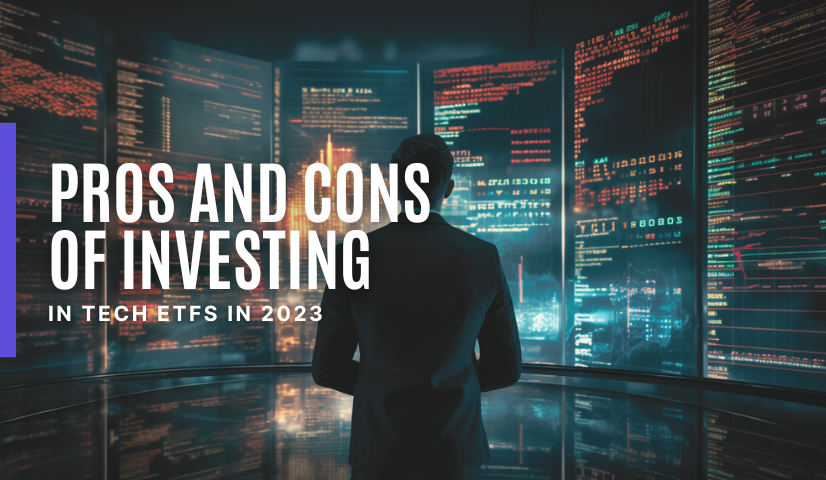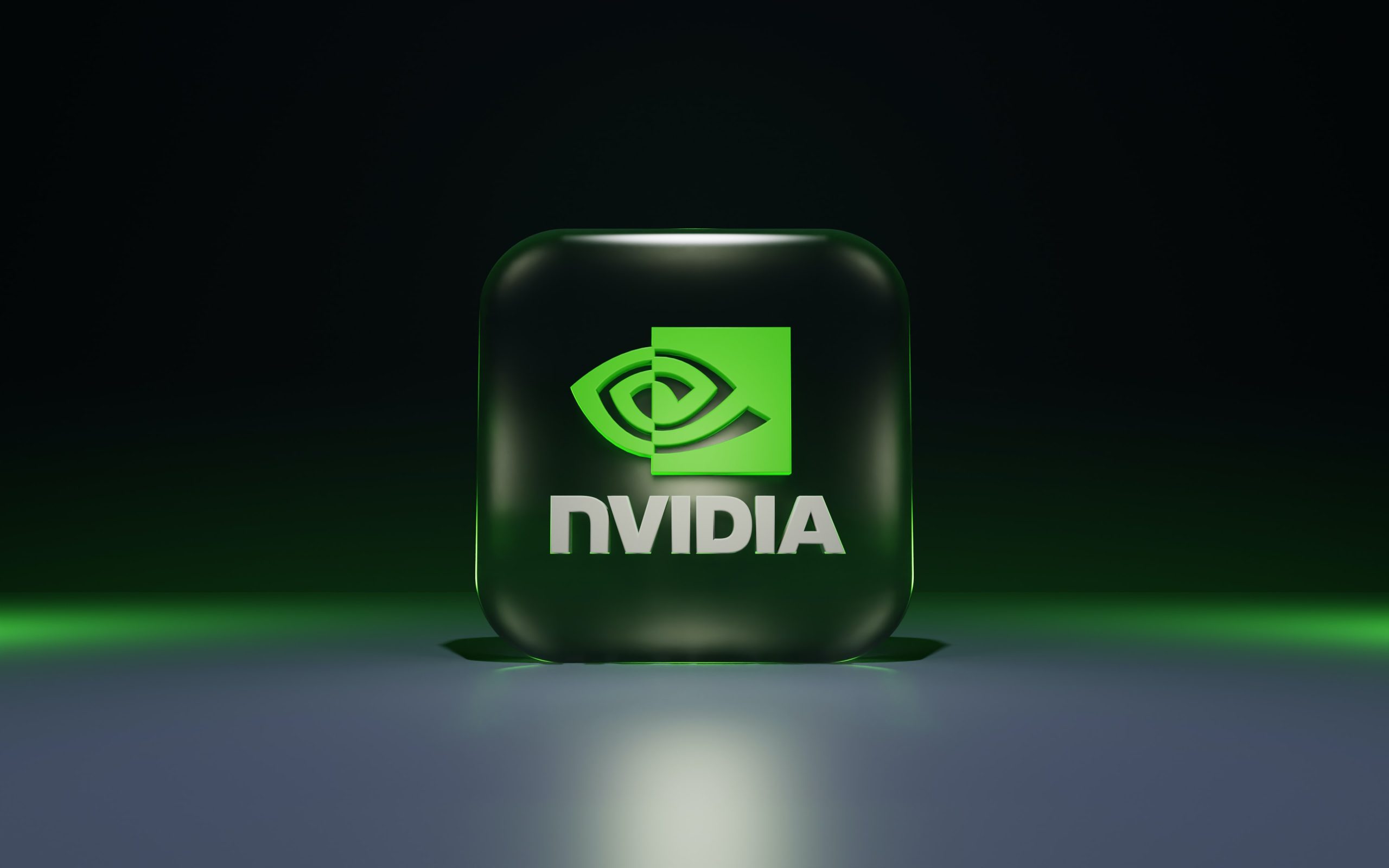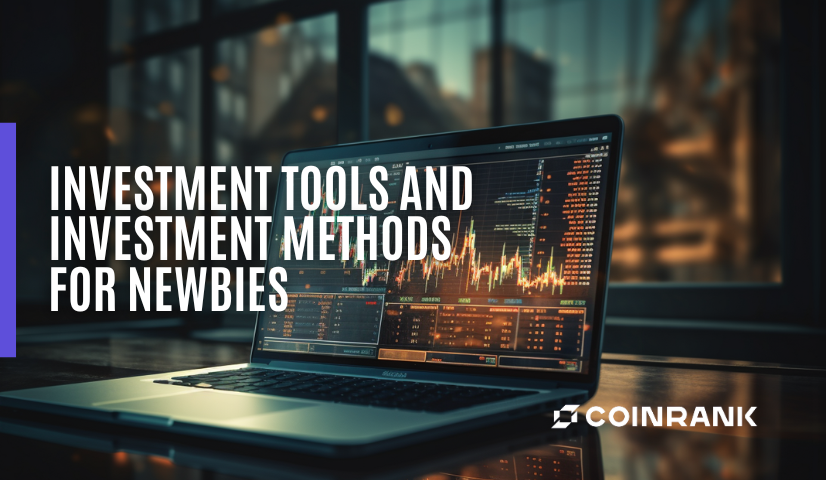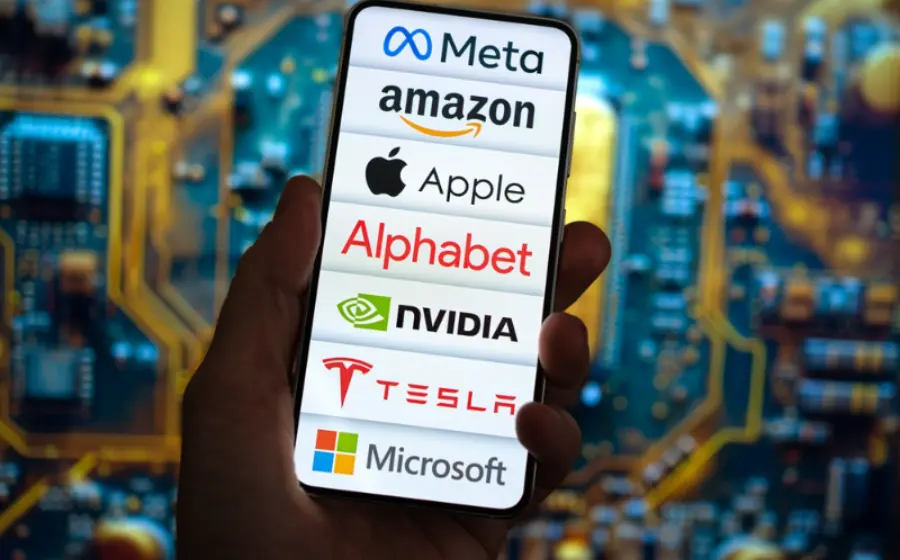
KEYTAKEAWAYS
- Tech ETFs Pros: Tech sector leads in returns; ETFs offer diversified exposure, reducing costs.
- Valuation Concerns: Tech's high prices, P/E ratios, potential vulnerability to unexpected events.
- Innovation and Uncertainty: Positive factors include AI, innovation; economic uncertainty impacts tech's fundamental need status. Consideration of timing and diversification important.

CONTENT
INTRODUCTION
Technology companies are leading the charge this year in terms of returns. Since stocks in the field have staged a recovery, market participants saw a good opportunity to invest using Exchange Traded Funds (ETFs). In doing so, it’s possible to reduce costs by gaining exposure to a basket of shares using a single instrument.
Stock picking is not an easy task which is why focusing on sectors could have a higher accuracy. ETFs became popular after the 2008 financial crisis and the total net assets of US-based ETFs were $6.5 trillion as of December 2022. Both households and big investment firms chose to allocate capital using such instruments, yet you need to be aware of the pros and cons before considering to follow suit.
Tech ETFs in particular share a few characteristics that may have an influence on future performance. If you want to understand the bigger picture and figure out some of the benefits and flaws associated with tech ETFs, then this article is for you.
HIGH INTEREST IN TECH
Scalability is one of the great features of technology. Also labeled as the “growth sector”, companies in the field can reach out to a global pool of customers, which could mean higher and higher revenue streams.
At the same time, technology has the potential to increase global productivity, meaning people no longer need to work harder by using robots and software to automate specific tasks. The prospects for exponential growth in the longer run act as an incentive for investors and traders looking for the best places to deploy their capital.
In 2023, some of the most popular tech ETFs are leading in terms of gains. Invesco QQQ ETF, which has $187 billion in total assets, is up 40% YTD. Technology Select Sector SPDR ETF (ETF) rose by 37.5% and the Vaneck Semiconductor ETF (SMH) consolidated 49.6% of gains.
All these figures are confirming that even during a period of high interest rates and elevated economic uncertainty, the market still favors technology companies. When it comes to big tech names like Apple, Google, Amazon, or Microsoft, one would have to consider that these managed to grow their earnings per share by an average of 10% per year during the last decade.
EXPENSIVE VALUATIONS
Although tech companies provide the above-mentioned benefits, they all come at a high price. This sector is one of the most expensive in the market, which leaves investors vulnerable in the face of unexpected events.
Because technology has the potential to grow exponentially over time, stocks are pricey when judging by multiples. Some stocks are trading at an insane P/E ratio. Some examples include Salesforce (CRM) with a P/E of 558, Zoom Video Communications with 154, and AMD with 483.
These figures show that investors already priced into the stock returns way into the future and now companies have to deliver, or even exceed these expectations. Deploying capital in an environment like this one could be tricky, especially for people with limited expertise.
That’s why an optimal approach for buying tech shares would be to wait for a deeper pullback in order to secure cheaper valuations. FOMO (Fear of Missing Out) works both ways – when there is enthusiasm traders buy without keeping track of valuations and when something bad happens, they sell on mass, wanting to reduce exposure at any cost.
PROMISING TECHNOLOGIES
Innovation is another positive factor supporting tech investments. This year has been mainly about Artificial Intelligence, as some companies managed to create hype around what the future might bring. OpenAI, which is owned by Microsoft, launched ChatGPT in November last year and since then, language model-based chatbots have continued to show up.
NVIDIA introduced GH2000 Grace Hopper Superchip, which is a chip made for large-scale AI and high-performance computing. Its main application is for research and science, as its computational power is able to solve complex problems.

Photo by BoliviaInteligente on Unsplash
The list can go on with biotech developments, nanotechnologies and telecom. We are far from seeing the peak of what these industries can provide in terms of innovation, so investors remain confident technology will be able to solve any issues that might show up along the way.
One of the difficult tasks would be to spot these opportunities from early on when valuations are more attractive and there’s high upside for growth. At the same time, since the US market is now dominated by financial derivatives, traders can use options to take advantage of short-term momentum hype.
GLOBAL ECONOMIC UNCERTAINTY
Despite its huge growth potential, technology is not necessarily a fundamental need. Food, energy and shelter continue to be the things people need to survive and this plays an important role in allocating capital during times of economic uncertainty.
In 2022 the world went through an energy crisis and as the performance shows, tech companies suffered. When prices go up and the economy grows below trend, consumers have to set priorities, putting money into basic stuff, reducing discretionary spending.
The prospects for economic growth remain dire and on top of that, uncertainty on whether we’ll have a recession by next year is elevated. Since tech ETFs are already near the 2023 highs, it’s hard to find a solid justification for an impulsive continuation.
Investors might start to reconsider their positioning. With solid gains on the screen, this could be a good period to take some profits off the table and wait for better opportunities a few months from now.
CONCLUSION
To conclude, tech ETFs are poised to remain a popular investment and trade opportunity for the retail and institutional players. That’s a piece of good news since capital will continue to enter the space, supporting higher valuations. At the same time, if you consider investing in tech ETFs you should have a professional approach, making sure there’s a rules-based approach behind your decisions.
These instruments are less volatile compared to individual stocks, which means it might be possible to use margin as well. However, it gets harder and harder to position as prices continue to go up and uncertainties remain.
Looking for the latest scoop and cool insights from CoinRank? Hit up our Twitter and stay in the loop with all our fresh stories!
















